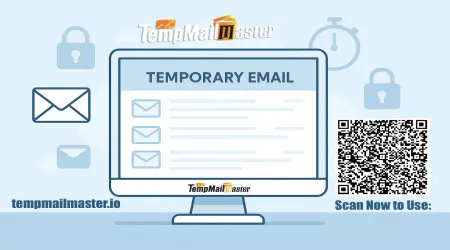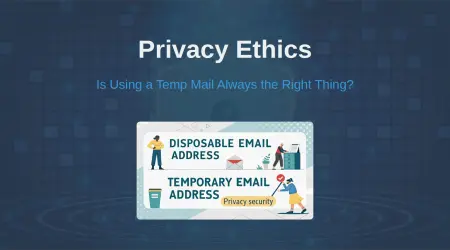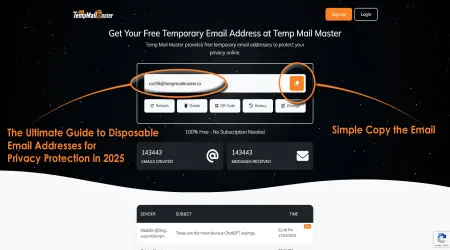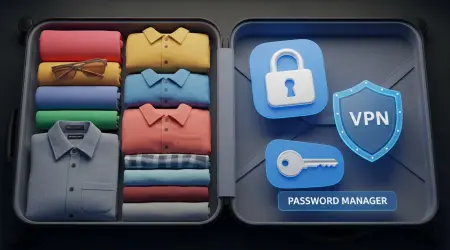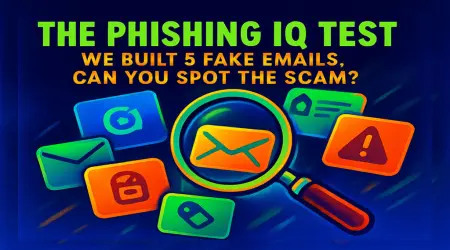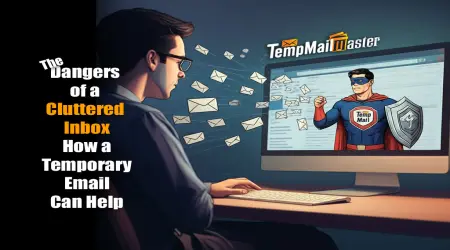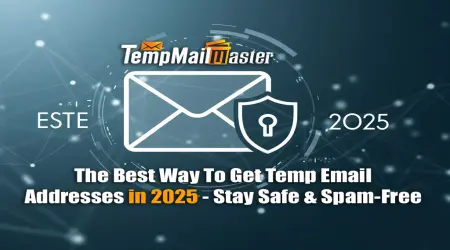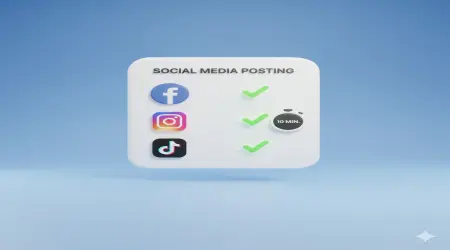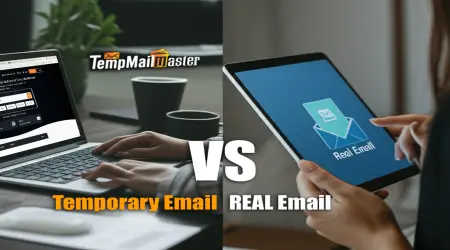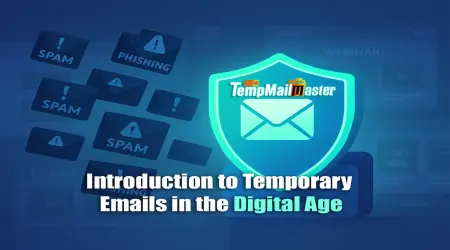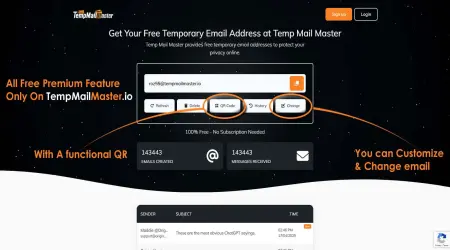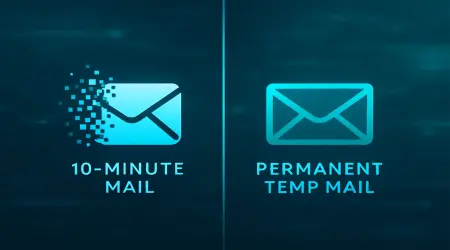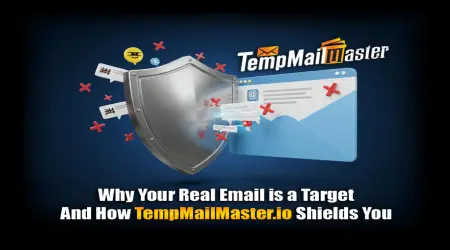
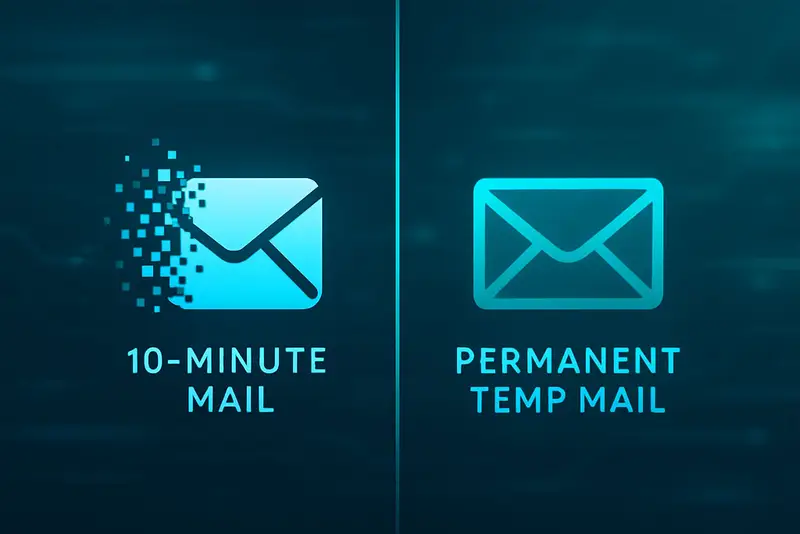
Situational Privacy: When to Use a 10-Minute Mail vs. a Permanent Temp Mail
In an increasingly interconnected world, our digital footprints are expanding at an unprecedented rate. Every new online service, every newsletter subscription, and every forum registration demands an email address, often leading to an overflowing inbox filled with spam, promotional offers, and unwanted solicitations. This constant barrage not only clutters our digital lives but also poses significant privacy risks, making the protection of our primary email address a paramount concern. It's a delicate balance between convenience and security, and navigating this landscape requires a strategic approach to managing our online identities.
I've personally experienced the frustration of a compromised email address, a situation that quickly escalated from annoying spam to more serious phishing attempts. It was a stark reminder that not all online interactions warrant the use of my permanent, personal email. This experience, and many others like it, highlighted the critical need for flexible and secure temporary email solutions that can adapt to various online scenarios.
This guide isn't just another comparison of temporary email services; it's a strategic roadmap designed to empower you with the knowledge to make informed decisions about your online privacy. By the end of this post, you'll understand the distinct advantages and ideal use cases for both 10-minute mail services and more permanent temporary email solutions. You'll gain clarity on when to deploy each tool to maximize your privacy and minimize digital clutter.
So, if you're tired of sifting through mountains of junk mail or constantly worrying about your email security, keep reading. We're about to delve into the nuances of situational privacy, equipping you with the insights to choose the right tool for every online task and reclaim control over your digital inbox.
Understanding the Ephemeral: 10-Minute Mail
What is 10-Minute Mail?
Imagine a disposable cup for your email needs. That's essentially what a 10-minute mail service offers. These services provide you with a temporary, self-destructing email address that typically lasts for a very short duration, often as little as ten minutes, though some might extend to an hour or so. The beauty of these services lies in their simplicity and immediacy. You visit a website, an email address is instantly generated for you, and you can use it to receive emails without any registration or personal information required. Once the timer runs out, the email address, along with any received messages, vanishes into the digital ether, leaving no trace.
<h3>Ideal Use Cases for 10-Minute Mail</h3>
So, when would you reach for this digital equivalent of a quick-use email? The answer lies in situations where you need to verify an email address for a one-off interaction, but have absolutely no intention of receiving future communications from that source. Think about those websites that demand an email address just to view a single article, download a freebie, or access a limited-time offer. You know the drill – you just want the content, not a lifetime subscription to their marketing emails. This is where 10-minute mail shines. It's perfect for:
•Accessing Wi-Fi hotspots: Many public Wi-Fi networks require an email for access. A 10-minute mail keeps your primary inbox clean.
•One-time downloads: Downloading an e-book, a whitepaper, or a software trial often comes with an email gate. Use a temporary address and avoid the subsequent spam.
•Testing new services: Curious about a new online platform but not ready to commit your real email? A 10-minute mail allows you to explore without consequence.
•Circumventing email walls: Some websites put up an email wall to access content. A quick temporary email gets you past it.
It's a fantastic tool for maintaining anonymity and preventing your primary inbox from becoming a digital landfill. However, it's crucial to understand its limitations. You won't be able to send emails from these addresses, and once the time is up, there's no recovering the address or its contents. It's a fleeting interaction, designed for immediate gratification and ultimate disposal.
The Enduring Solution: Permanent Temporary Mail
What is Permanent Temporary Mail?
In contrast to the fleeting nature of 10-minute mail, permanent temporary mail services offer a more enduring solution for managing your online privacy. These services provide you with a disposable email address that, while still temporary in the sense that it shields your primary email, doesn't self-destruct after a short period. Instead, these addresses can remain active for days, weeks, months, or even indefinitely, depending on the service provider. They often come with features like an inbox, the ability to reply to emails (though usually not initiate new ones), and sometimes even custom domain options. Think of it as a secondary, long-term burner email that you can use for specific purposes without exposing your main address.
When to Opt for Permanent Temporary Mail
The utility of permanent temporary mail extends beyond the quick, one-off interactions. These services are invaluable when you need a disposable email for a longer-term engagement, but still want to maintain a degree of separation from your primary inbox.
Consider these scenarios:
•Forum registrations and online communities: If you plan to actively participate in a forum or online community, a permanent temporary email allows you to receive notifications and interact without cluttering your main inbox.
•Newsletter subscriptions you might actually read: For newsletters that genuinely interest you, but you're wary of giving out your primary email, a permanent temporary address provides a safe middle ground.
•Online shopping accounts: When making purchases from a new online store, using a permanent temporary email can help you track orders and receive shipping updates without exposing your main address to potential data breaches or excessive marketing.
•Signing up for trials with extended periods: Some software trials or services offer longer trial periods that require an email for ongoing communication. A permanent temporary email is ideal here.
•Customer support interactions: For ongoing customer support tickets or inquiries, a permanent temporary email ensures you receive responses without tying up your primary inbox.
The key differentiator here is the longevity and the ability to manage incoming correspondence over an extended period. While it still offers a layer of anonymity, it provides more functionality and persistence than its 10-minute counterpart.
10-Minute Mail vs. Permanent Temp Mail: A Comparative Look
While both 10-minute mail and permanent temporary mail serve the overarching goal of protecting your primary email address, their fundamental differences dictate their optimal use. Understanding these distinctions is crucial for making an informed decision about which tool to deploy in any given situation. Let's break down the key areas of comparison:
The choice between these two tools boils down to the nature of your interaction. If it's a fleeting encounter, a digital handshake with no expectation of future communication, the 10-minute mail is your go-to. It's the ultimate in disposable privacy. However, if you anticipate needing to receive multiple emails, or maintain an account for a period, even if it's not your primary identity, then a permanent temporary mail service offers the necessary longevity and functionality. It's about aligning the tool with the task, ensuring you have just enough privacy and persistence without over-committing your digital identity.
Choosing the Right Tool for Your Task
The strategic use of temporary email services is about more than just avoiding spam; it's about situational privacy. It's about understanding the context of your online interactions and deploying the appropriate level of protection. Here's a framework to help you decide:
•For absolute anonymity and fleeting interactions: If you're signing up for a one-time download, accessing a public Wi-Fi network, or simply browsing a site that demands an email to view content, a 10-minute mail service is your best friend. It provides immediate access and leaves no lasting digital footprint. Think of it as a digital incognito mode for your email.
•For semi-permanent engagements and controlled communication: When you need to register for a forum, subscribe to a newsletter you genuinely want to follow, or create an account for an online store where you might make repeat purchases, a permanent temporary mail service is the superior choice. It offers the flexibility to receive ongoing communications without exposing your primary email to potential data breaches or overwhelming marketing campaigns. This allows you to compartmentalize your online life, dedicating specific temporary emails to specific categories of interactions.
•When in doubt, err on the side of caution: If you're unsure about the trustworthiness of a website or the potential for future spam, always opt for a temporary email. You can always switch to your primary email later if the service proves to be valuable and trustworthy. The goal is to minimize the exposure of your most sensitive digital asset – your primary email address.
Ultimately, the power lies in your hands to dictate the terms of your online engagement. By thoughtfully choosing between a 10-minute mail and a permanent temporary mail, you transform from a passive recipient of digital noise into an active manager of your online privacy. It's a small but significant step towards a cleaner, safer, and more controlled digital experience.
Conclusion
In the digital age, where our email addresses have become the keys to our online kingdoms, mastering the art of situational privacy is no longer a luxury but a necessity. The choice between a 10-minute mail and a permanent temporary mail is not merely a technical one; it's a strategic decision that empowers you to control your digital identity, protect your privacy, and curate a more intentional online experience. By understanding the distinct advantages and ideal use cases for each tool, you can confidently navigate the vast and often intrusive landscape of the internet, ensuring that your primary inbox remains a sanctuary for meaningful communication, not a dumping ground for digital debris. So, the next time you're prompted for an email address, take a moment to consider the context, and choose the right tool for the task. Your future, less-cluttered self will thank you for it.
Written by Arslan – a digital privacy advocate and tech writer/Author focused on helping users take control of their inbox and online security with simple, effective strategies.

